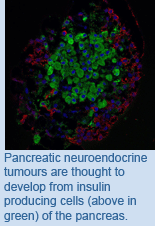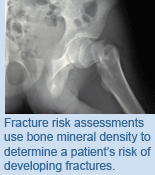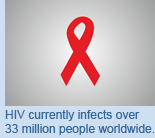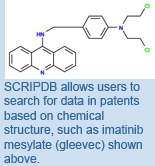
September 2012
Welcome to Net Results EXPRESS
Net Results EXPRESS (NRx) is an award-winning, monthly e-newsletter highlighting medical and scientific breakthroughs, major grants and honours awarded and other research-related events at UHN. Through NRx you can read about ongoing research at our five research institutes, the Ontario Cancer Institute (OCI), the Toronto General Research Institute (TGRI), the Toronto Western Research Institute (TWRI), the Toronto Rehabilitation Institute (TRI) and the Techna Institute for the Advancement of Technology for Health (TECHNA). We hope you will find this newsletter informative and helpful. If you have feedback or questions, please contact www@uhnresearch.ca. Christopher J. Paige, PhD, FCAHS |
UHN Licenses Cancer Treatment Planning Technology to RaySearch Laboratories
Destroying the cancerous cells in a tumour with ionizing radiation therapy is one of the most common cancer therapies. Over 6,500 patients are treated this way at Princess Margaret Cancer Centre each year. External beam radiation therapy delivers a high dose of radiation to the tumour while minimizing the dose that nearby healthy tissue receives by using many beams of radiation applied from different angles to intersect at the tumour. Advanced techniques, such as intensity modulated radiation therapy, further refine the process by dynamically adjusting the strength of the radiation beam as it moves around the patient. Each patient requires a plan to be developed that will determine how much radiation is required for cancer control and how much the surrounding tissues will absorb. This can be a time-consuming process for medical physicists, who have to work with complex tumour shapes while optimizing the application of hundreds of beams. An automated treatment planning system that can analyze the diagnostic images and segment the tumour from the healthy organs, optimize the beam application and calculate the dose distribution was recently developed at Princess Margaret by Drs. Tom Purdie and Michael Sharpe of the Radiation Medicine Program. The system saves medical physicists a lot of time, allowing them to produce a treatment plan and quality assurance report in just a few minutes instead of the hours it would take otherwise. Princess Margaret has validated the technique in several studies, confirming the time savings and improved plan quality. The technology has been used in practice for several years within UHN and has now been licensed exclusively to RaySearch Laboratories. Mark Taylor, Director of Commercialization for Techna Institute says “This deal is representative of how business is done at UHN. Efficiency and quality of care is improved through the development of technology that is proven and implemented clinically. Commercialization activities are embedded from the start of the program, and using partnerships with leading companies like RaySearch, the technology is made accessible for the benefit of cancer patients all over the world.” |
Cancer: Characterizing the Effect of Genetic Variants in Neuroendocrine Cancers
The study analyzed tumours from pNET patients and identified that a SNP in the Fibroblast Growth Factor Receptor 4 (FGFR4)—a genetic variant that has been linked with poor outcomes in other cancers—was associated with larger and more aggressive tumours. To further understand this association, they created an experimental model containing this genetic variant (FGFR4-R388) and examined the behaviour of tumours with this variant in greater detail. They determined that FGFR4-R388 caused an increase in tumour size, increased the spread of cancer to the liver and a resistant response to everolimus, a drug used in the treatment of neuroendocrine cancers. “With these findings, we have determined that the FGFR4-R388 SNP is an effective and predictive biomarker in pNET progression and aggressiveness,” says Dr. Asa. “We hope that one day FGFR4-R388 could be used as a tool to determine the most effective therapy for patients with neuroendocrine cancers.” Serra S, Zheng L, Hassan M, Pham AT, Woodhouse LJ, Yao JC, Ezzat S, Asa SL. The FGFR4-G388R single nucleotide polymorphism alters pancreatic neuroendocrine tumor progression and response to mTOR inhibition therapy. Cancer Research. 2012 September 17. [Pubmed abstract] This work was supported by the Raymond and Beverly Sackler Foundation, the Princess Margaret Hospital Foundation and the Ontario Ministry of Health and Long-Term Care. |
Osteoporosis: Inaccurate Assessment of Fracture Risk in Ontario’s Non-Urban Areas
To do this, Dr. Jaglal and her research team re-evaluated the fracture risk assessments from 48 patients with a known history of low trauma fracture. The study showed that over 50% of the reports underestimated the risk of future fractures in this group. This would suggest that over 50% of the referring physicians received inaccurate reports for vulnerable patients. In addition, over 20% of the patients that had been categorized as being only moderately at risk of developing fractures were ranked as high risk by the research team. According to Dr. Jaglal, “Accurate fracture assessments are important as they inform the physician on how to appropriately treat the patients. If reported risk assessments are inaccurate, there is a potential for inappropriate treatment decisions that would leave high-risk patients untreated.” This study highlights a quality gap in Ontario’s fracture risk assessments and Osteoporosis Canada has already taken steps to remedy this gap—significant changes were made in 2011 to their fracture risk assessment guidelines. Allin S, Munce S, Schott AM, Hawker G, Murphy K, Jaglal SB. Quality of fracture risk assessment in post-fracture care in Ontario, Canada. Osteoporosis International. 2012 August 29. [Pubmed abstract] |
Immunology: Insights into HIV Susceptibility
TGRI Scientist Dr. Rupert Kaul and his team examined 116 cervical and blood samples from HESN female sex workers and 17 control samples from women at low HIV risk in Nairobi, Kenya. Levels of Interleukin (IL)17 and IL22—proteins made by cells that are important for immune defense in the cervix but are also thought to be highly receptive targets for HIV—were significantly reduced in HESN participants compared to controls. The production of other immune proteins, including pro-inflammatory cytokines and ß-chemokines, were also shown to be reduced in HESN individuals. This study is the first to demonstrate the functional immune responses that are associated with protection against HIV in the genital mucosa, the primary site of HIV exposure and infection in female sex workers. Dr. Kaul adds, “These immune correlates of reduced HIV susceptibility may provide important clues for future vaccine and microbicide research.” Blunted IL17/IL22 and pro-inflammatory cytokine responses in the genital tract and blood of HIV-exposed, seronegative female sex workers in Kenya. Chege D, Chai Y, Huibner S, Kain T, Wachihi C, Kimani M, Barasa S, McKinnon LR, Muriuki FK, Kariri A, Jaoko W, Anzala O, Kimani J, Ball TB, Plummer FA, Kaul R. PLoS One. 2012 August. [Pubmed abstract] This work was supported by the Canadian Institutes of Health Research, the Bill and Melinda Gates Foundation, the Canada Research Chair Program and the Canada Foundation for Innovation. |
SCRIPDB Partners with NIH PubChem
Patents are a rich source of data about bioactive molecules. An application often includes mechanisms of action, diseases targeted or the synthetic pathways used to produce molecules of interest. There are millions of patents in the US, with approximately 12,000 new chemistry and drug-related patents issued each year. NIH PubChem is a free database of molecules that provides information about a wide variety of properties, including bioactivity and chemical structure. The data hosted at PubChem comes from 207 sources, SCRIPDB being the latest and seventh largest (second largest academic)—714 times larger than the next largest Canadian contribution. Construction of new medicines via game proof search. Heifets, A., Jurisica, I. 26th American Association for Artificial Intelligence Conference on Artificial Intelligence (AAAI-12), AAAI Press, Menlo Park. 2012. [Article] |
 |
![]()
 Dr. Mary Gospodarowicz, the long-serving medical director of the Princess Margaret Hospital, was named president of the Union for International Cancer Control (UICC) at a worldwide conference held in Montreal. Dr. Gospodarowicz is not only the first Canadian to hold this prestigious position, but is also the first woman named to the post.
Dr. Mary Gospodarowicz, the long-serving medical director of the Princess Margaret Hospital, was named president of the Union for International Cancer Control (UICC) at a worldwide conference held in Montreal. Dr. Gospodarowicz is not only the first Canadian to hold this prestigious position, but is also the first woman named to the post. The UICC is the largest cancer fighting organization of its kind, with more than 400 member organizations from across 120 countries. Based in Switzerland, it is the leading non-governmental and non-profit cancer organization. UICC’s mission is to eliminate cancer as a life-threatening disease for future generations.
Congratulations Dr. Gospodarowicz!
 Dr. Mansfield joins the Mobility Team at TRI. Her research focuses on understanding balance and mobility challenges of individuals with stroke and physical rehabilitation to help to overcome these challenges. She is particularly interested in understanding how we acquire and re-learn ‘involuntary’ balance motor skills and how to apply technology to assess and treat patients in the clinic. She received a PhD from the Institute of Medical Science at the University of Toronto in 2007.
Dr. Mansfield joins the Mobility Team at TRI. Her research focuses on understanding balance and mobility challenges of individuals with stroke and physical rehabilitation to help to overcome these challenges. She is particularly interested in understanding how we acquire and re-learn ‘involuntary’ balance motor skills and how to apply technology to assess and treat patients in the clinic. She received a PhD from the Institute of Medical Science at the University of Toronto in 2007.  Dr. Rudzicz’s research involves the study of the neural origins of atypical speech and language processing, including those related to dementia and traumatic brain injury. He will be a member of the TRI Communication Team. He received his PhD in Computer Science at the University of Toronto in 2011.
Dr. Rudzicz’s research involves the study of the neural origins of atypical speech and language processing, including those related to dementia and traumatic brain injury. He will be a member of the TRI Communication Team. He received his PhD in Computer Science at the University of Toronto in 2011. Dr. Taati’s work focuses on the application of computer vision and machine learning techniques in health monitoring in the home and in intelligent rehabilitation technologies. Dr. Taati joins the Artificial Intelligence and Robotics in Rehabilitation Team. He completed his PhD in Electrical and Computer Engineering at Queen’s University in 2009 and joined TRI as a MITACS postdoctoral fellow.
Dr. Taati’s work focuses on the application of computer vision and machine learning techniques in health monitoring in the home and in intelligent rehabilitation technologies. Dr. Taati joins the Artificial Intelligence and Robotics in Rehabilitation Team. He completed his PhD in Electrical and Computer Engineering at Queen’s University in 2009 and joined TRI as a MITACS postdoctoral fellow.Feedback
Net Results EXPRESS is brought to you by UHN Research Communications. We hope you have enjoyed receiving this message. If you have any feedback, please email www@uhnresearch.ca.
To access archived issues of Net Results EXPRESS, visit uhnresearch.ca/news/netresultsexpress
Some images adapted from the image archives of stock.xchng.ca and Wikipedia. Pancreatic neuroendocrine tumours (pNET) can show a wide range of different behaviours, from dormancy and delayed growth to rapid expansion and spread to other organs in the body. This behaviour may be a result of subtle genetic differences of patients who develop these tumours. To uncover this link, OCI Senior Scientists Drs.
Pancreatic neuroendocrine tumours (pNET) can show a wide range of different behaviours, from dormancy and delayed growth to rapid expansion and spread to other organs in the body. This behaviour may be a result of subtle genetic differences of patients who develop these tumours. To uncover this link, OCI Senior Scientists Drs.  Physicians use fracture risk assessments to guide them when treating patients that have an increased risk of developing fractures therefore it is critical that these assessments accurately assess the risk of fracture, particularly in patients with fragile bones. TRI Senior Scientist Dr.
Physicians use fracture risk assessments to guide them when treating patients that have an increased risk of developing fractures therefore it is critical that these assessments accurately assess the risk of fracture, particularly in patients with fragile bones. TRI Senior Scientist Dr.  Human immunodeficiency virus (HIV)—a virus that destroys vital cells in the immune system (called CD4 cells) and leads to the development of the Acquired ImmunoDeficiency Syndrome (AIDS)—is a global epidemic that disproportionately affects women more than men. Most people acquire HIV through sex and the most common site for women to be infected by HIV is the lining (or mucosa) of the cervix and vagina. However, there are individuals, including female sex workers, who have been heavily exposed to HIV but continue to test negative on standard HIV serology tests. A better understanding of how the immune system is able to protect these HIV exposed seronegative (HESN) individuals could provide insight into finding a vaccine or cure for HIV.
Human immunodeficiency virus (HIV)—a virus that destroys vital cells in the immune system (called CD4 cells) and leads to the development of the Acquired ImmunoDeficiency Syndrome (AIDS)—is a global epidemic that disproportionately affects women more than men. Most people acquire HIV through sex and the most common site for women to be infected by HIV is the lining (or mucosa) of the cervix and vagina. However, there are individuals, including female sex workers, who have been heavily exposed to HIV but continue to test negative on standard HIV serology tests. A better understanding of how the immune system is able to protect these HIV exposed seronegative (HESN) individuals could provide insight into finding a vaccine or cure for HIV. Dr.
Dr.